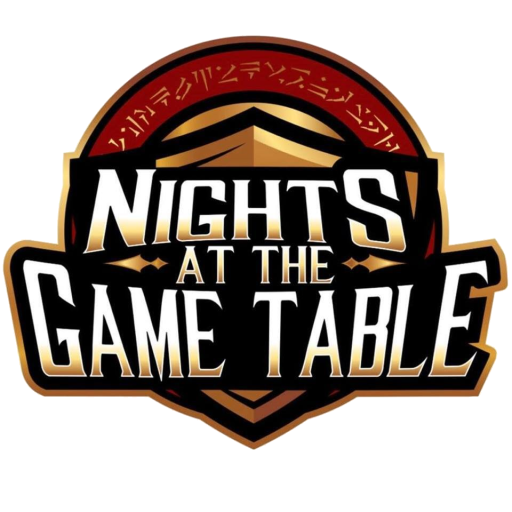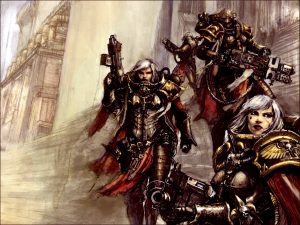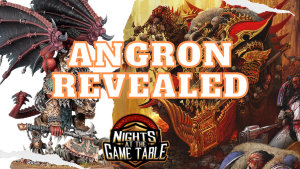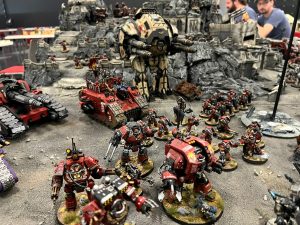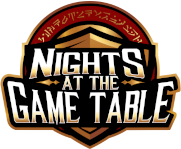Kill Teams is fresh off the press, and it’s quite an awesome game. It follows a similar ruleset to 40K, while having just enough differences to truly make it feel like it is its own game, and not just “40K with very few models”.
To help you get the most out of your games of Kill teams, we’ve got a new series breaking down everything you could want to know about Matched Play, including the Command Roster, Specializations, the Scouting Phase, and more! This way, you’ll be completely prepared to go into any game of Kill Teams and stand a great chance of winning!
Today, we’re looking at how specialist units can mean the difference between victory and defeat!

In KT, models are allowed to be given a Specialism, which improves their capabilities in some way passively, while also providing them with a unique Tactic only they can use. A model that is given a Specialism is referred to as a specialist. Every model’s datasheet will tell you which Specialisms they are allowed to be given.
There are a total of 10 Specialisms in KT, and they are not created equal.
For one, every Kill Team (and therefore every Command Roster) MUST have at least one model with the Leader Specialism. Not including the Leader, every Kill Team is allowed to have three additional specialists, and only one of any given specialist.
We will be assembling a sort of tier list for these Specialisms, along with a breakdown of what each Specialism does and why it falls in the tier that it falls into.
Recommended Specialisms:
These Specialisms are very powerful, especially when combined with the right equipment. You’ll want to include as many of these Specialisms as you can on your Command Roster, and you’ll practically always want to include them in any given Kill Team.
COMBAT: Combat provides a static +1 attack buff, making it naturally synergize with any model intended for close quarters combat. What’s particularly nice about Combat is it’s consistency. Unlike its partner Specialism, Zealot, Combat is active in every round of combat, and it’s active regardless of if you charge, or get charged. It also has a powerful Tactic, allowing you to effectively fight with two different models in a row, which can swing important combats. This makes it a great choice against other melee armies, since you will sometimes find yourself being the person getting charged. Overall, the Combat Specialism is a simple but very effective Specialism. You’ll possibly want to leave it at home against gunlines in favor of a Zealot, but if you aren’t sure what you’re facing, don’t have access to Zealot, or you’re anticipating a melee slugfest, Combat more than pulls its weight.
LEADER: Leader is the only required Specialism, so really it’s in a tier of its own. However, for simplicity we are including it here instead of giving it its own tier. Leader is a very straight forward Specialism. Every turn your Leader is alive, you get a bonus command point. It also has a unique tactic that’s pretty much identical to Combat’s tactic. However, this can be a little misleading. Put simply, it’s debilitating to lose your Leader in a game, and the Leader Tactic requires your Leader to be in harm’s way. Some armies won’t have much of a choice other than to make their Leader a melee beat stick. But, if you can put it on a long ranged model or on a cheap model that you can easily hide, it’s better to make that your Leader, even if it’s rather unfluffy. The bottom line is that you need your Leader to survive no matter what, and that should be your main driving factor behind who you assign this Specialism to.
SNIPER: Hands down the best Specialism in the game as far as optional Specialisms go. Sniper passively allows you to re-roll 1’s to hit, which is already a 17% boost to accuracy. As if this wasn’t enough, its unique Tactic provides the Sniper with +1 to hit. Give this to a model that has a long range weapon or a weapon that flat out ignores the long range penalty (ideally, both), and you have a model that almost can’t miss in a game where accuracy is hard to come by. Keep the Sniper safe, and over the course of a game he’ll easily rack up lots of Flesh Wounds and kills, practically guaranteed. Very straight forward, but very effective. You can also get some serious mileage by pairing this with a Plasma weapon, since re-rolling 1’s to hit makes you way less likely to kill yourself.
VETERAN: Veteran is a rather straightforward Specialism, and at first glance it actually appears very weak. Passively, it prevents the model from suffering any Leadership penalties, which while not bad, isn’t incredible either. Its Tactic is where it truly shines. It allows you to move once before the game begins. Normally, this wouldn’t be that big of a deal. But, KT is played on a very small board, which makes bonus movement extremely impactful. In addition, during the Scouting Phase it’s very popular for someone to Take Forward Positions. If you successfully get to use this, than Veteran allows you to move an extra model along with everyone else. Where it really helps though is in countering the enemy if they get to Take Forward Positions, as you’re able to get at least one model in a strong position for the match.
ZEALOT: Zealot is more or less the high risk, high reward version of Combat. The Zealot Specialism provides +1 attack and +1 Strength on the turn you charge, which makes even something like a Marine with a Chainsword a downright dominating melee threat. It’s tactic also allows you to push the Zealots damage even higher by allowing you to make bonus attacks on rolls of 6+ to hit. Just be careful against other melee armies, since getting charged means you get no benefit from your Specialism, other than the Tactic. This makes Zealot a bit weaker than Combat against an army that you suspect will be getting up close and personal, but this leaves Zealot as an uncontested whirlwind of death against ranged armies. If you can take Combat and Zealot, these two Specialisms can completely dominate a player that isn’t ready for this level of melee threat.

Situational Specialism:
Moving right along, we find ourselves at the more situational Specialisms. These Specialisms can put in a lot of work, but their effectiveness tends to be relatively narrow, meaning they won’t always be useable or worth taking. Consider having 1 of these Specialisms somewhere on your Command Roster, just so you have the option available, but don’t feel too bad if they don’t make the cut on your roster.
COMMS: Comms has a somewhat awkward passive ability. It allows you to bestow a +1 to hit buff to another model within 6” during the shooting phase, which is very strong if applied to the right Specialist. However, this requires you dedicating a second specialist to babysitting duty, which is rarely worth it. Luckily, the Comms Tactic is actually fairly strong, effectively providing a +1 LD buff to the entire Kill Team for one Morale Phase. This won’t save you if you have a lot of models with Flesh Wounds or that are Out of Action, but it can counteract having one or two models injured. All in all, Comms is just too situational to really be a recommended option, but it’s not a horrible choice as long as you plan around making it.
DEMOLITIONS: Demolitions is hands down the most straight forward Specialism in terms of its effects. Passively, it provides +1 to wound against targets that are obscured. In addition, its Tactic provides an additional +1 to wound anytime. The problem with Demolitions is that it really only pairs well with one kind of weapon, which is a Flamer. A model that can advance and shoot a weapon that makes D6 auto hits that practically auto wound is incredibly powerful, as long as the low range isn’t an issue. Unfortunately, in a lot of games, a model with a Flamer will wound up getting taken Out of Action before it can put in serious work. However, against more melee focused armies, a Demolitions specialist with a Flamer can absolutely run wild over the opposition. Unlike the other situational specialisms which got their ranking for their inconsistent value, this Specialism is consistently valuable in a small subset of games. But when it’s live, man is it live!
HEAVY: Heavy is probably the third strongest Specialism in the game, behind Sniper and Leader, but it suffers from only being useful on a small handful of weapons. The Heavy Specialism allows you to ignore movement penalties for moving and firing Heavy weapons, or advancing and firing an assault weapon. KT is a game rife with penalties to accuracy, so anything that allows you to combat this is automatically a powerful inclusion. In addition, it’s unique Tactic also allows you to combat the accuracy issues in the game by letting you to make an extra attack with your ranged weapon, as long as your weapon was already making more than 1 to begin with. An extra attack may not sound like a huge difference, but in a game like KT, it can easily be the difference between doing nothing or applying a Flesh Wound to a model, or possibly even taking someone Out of Action. The only awkward part about the Heavy Specialism is its somewhat limited to what it pairs with. However, it provides quite a bit of power with the right weapon. Who doesn’t love a mobile Heavy Bolter that can make 4 attacks?
MEDIC: Medic is unfortunately almost exclusively useful for its Tactic, and that’s about it. Passively, he never counts as being shaken for Nerve tests, which is pretty narrow, but may come up once in a full moon. He has a decent Tactic however, allowing you to give another model +1 to advance or charge rolls, and +1 attack. The issue here is, much like Comms, the Medic specialism really just exists to babysit another model, usually a second specialist. Ironically, he also minorly assists with Morale as well, making them somewhat two sides of a coin. Overall though, spending a Specialist slot on little more than a babysitter just isn’t as impactful as other options that you have available to you.
And finally, we have the only specialism that we do not recommend…

Not Recommended Specialism:
SCOUT: Scout passively provides the ability to Re-roll Advance rolls. While not a bad ability per say, it’s just not that impactful compared to the other Specialisms. Unfortunately, its tactic is a real loser, providing a basic +2” to movement, and that’s it. Effectively, Scout just helps you with a model’s movement and positioning. Proper play and movement makes this largely unnecessary, especially since the model it’s attached to receives no other benefits. You might be able to do something halfway decent with a Flamer that has a really decent movement range, but that competes against a Demolitions Flamer, and Scout flat out loses there. I suppose if you have this available and don’t have access to Demo, this becomes a situational choice. Overall though, if you need more mobility, take a Veteran and/or fight for Take Forward Positions in the Scouting Phase.
Most of the Specialisms in KT are viable and worth considering in the right situation. Except for Scout, you’ll want to include at least 1 of every Specialism that you have available somewhere on your roster. You’ll have to experiment with what models and equipment you pair them with, however.
Be sure to leave a comment telling us what your favorite specialism is!
